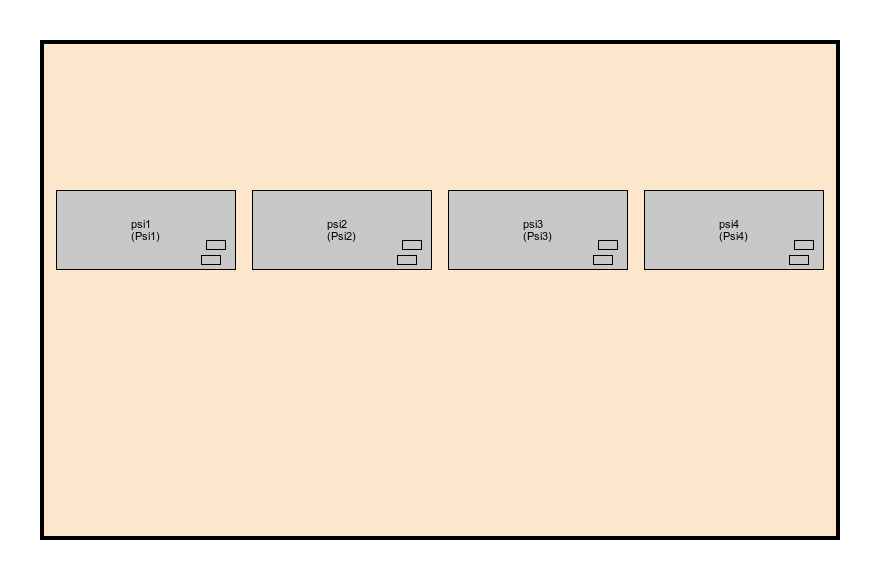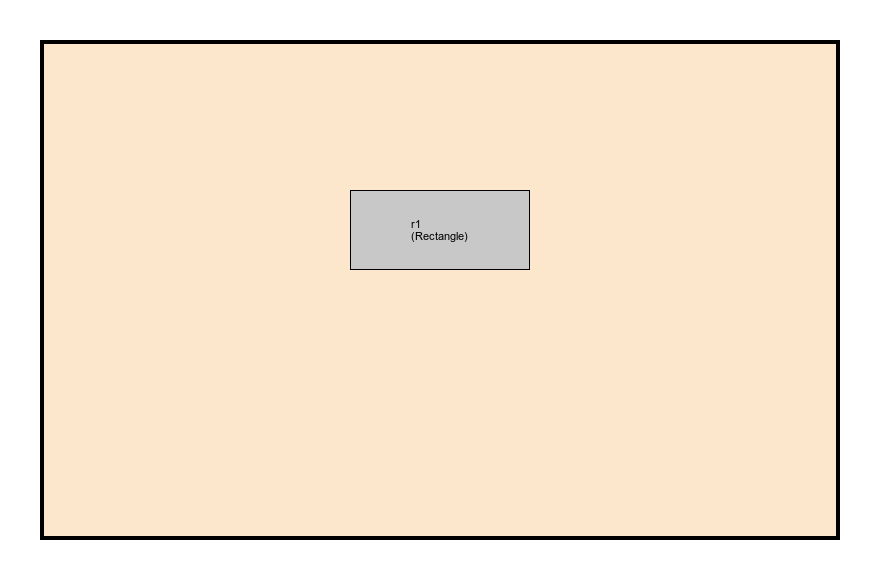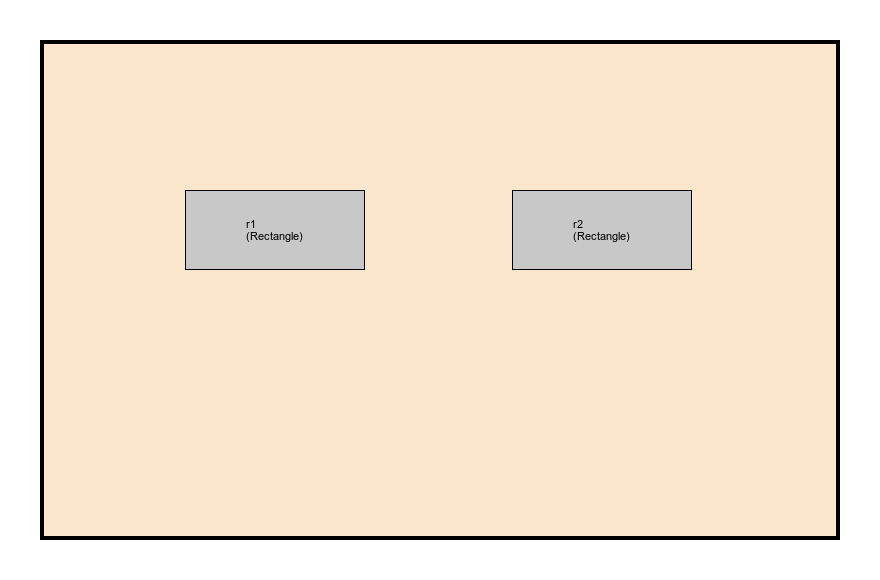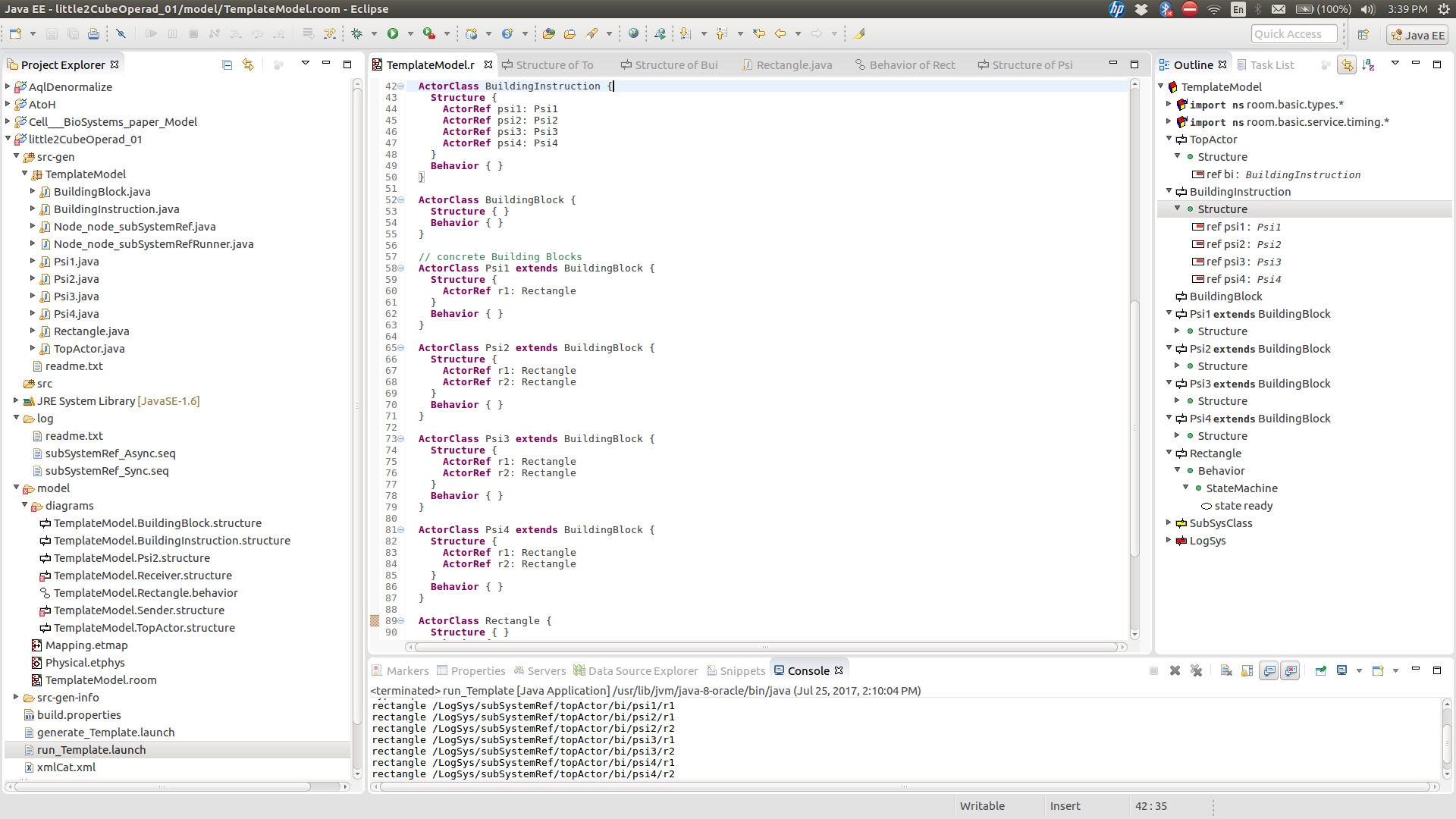
Figure 2 in the paper Matriarch: A Python Library for Materials Architecture by Tristan Giesa, Ravi Jagadeesan, David I. Spivak, and Markus J. Buehler describes a simple operad called the little 2-cubes operad E₂. As part of my attempts to learn about category theory and operadics, I am trying to replicate this operad using Xholon and eTrice, both based on the ROOM formalism. This web page is very terse, and I will try to gradually add more descriptive details.
Figure 2. Architecture of rectangle arrangements. Equivalent to an early
example of an operad from mathematics called the little 2-cubes operad
E2. In the terminology of this paper, the only building blocks in E2 are
rectangles. A building instruction in E2 is an arrangement of nonoverlapping
rectangles within a larger rectangle. In the composition, the placements and
aspect ratios of building blocks are retained, but sizes can change. The
operad E2 is the mathematical description of rectangle configurations as
they are nested into hierarchies of arbitrary depth. The operad underlying
Matriarch is far more complex than E2, with more diverse building blocks
and building instructions.
Using eTrice, I can partially represent this operad using the following ROOM model.
RoomModel TemplateModel {
import room.basic.types.* from "../../org.eclipse.etrice.modellib.java/model/Types.room"
import room.basic.service.timing.* from "../../org.eclipse.etrice.modellib.java/model/TimingService.room"
LogicalSystem LogSys {
SubSystemRef subSystemRef: SubSysClass
}
SubSystemClass SubSysClass {
ActorRef topActor: TopActor
ActorRef timingService: ATimingService
LayerConnection ref topActor satisfied_by timingService.timer
LogicalThread defaultThread
}
// - build your application from here
ActorClass TopActor {
Structure {
ActorRef bi: BuildingInstruction
}
}
ActorClass BuildingInstruction {
Structure {
ActorRef psi1: Psi1
ActorRef psi2: Psi2
ActorRef psi3: Psi3
ActorRef psi4: Psi4
}
}
ActorClass BuildingBlock {
Structure { }
}
// concrete Building Blocks
ActorClass Psi1 extends BuildingBlock {
Structure {
ActorRef r1: Rectangle
}
}
ActorClass Psi2 extends BuildingBlock {
Structure {
ActorRef r1: Rectangle
ActorRef r2: Rectangle
}
}
ActorClass Psi3 extends BuildingBlock {
Structure {
ActorRef r1: Rectangle
ActorRef r2: Rectangle
}
}
ActorClass Psi4 extends BuildingBlock {
Structure {
ActorRef r1: Rectangle
ActorRef r2: Rectangle
}
}
ActorClass Rectangle {
Structure { }
Behavior {
StateMachine {
Transition init: initial -> ready {
action {
"System.out.println(\"rectangle \" + getInstancePath());"
}
}
State ready
}
}
}
}
eTrice can display the ActorClasses as editable structure diagrams.



eTrice can compile and run the model. Note the structure and behavior diagrams and the generated Java classes to the left, the model outline to the right, and the text output at the bottom. The text output is written by the line of Java code in the Rectangle Behavior "System.out.println(\"rectangle \" + getInstancePath());"

Links to my exploratory Xholon operad-like models. There's no guarantee yet that these are actually operads. (TODO add descriptions)
TODO Write another Xholon model using PixiJS a "HTML5 2D rendering engine that uses webGL with canvas fallback", which will allow me to show the actual "placements and aspect ratios of building blocks".
Notes
Xholon GWT is a Xholon project. Copyright (C) 2017 Ken Webb
@QWERTYUIk
OPASmDFGHe
primordion
JKLZcXCVB.